If you’re an aspiring electric guitar player, mastering the basics of your instrument takes practice, dedication, and knowledge. Unfortunately, most people don’t know where to start when it comes to learning how to play electric guitar. That’s why we’ve created this blog post to help guide you on what techniques are best for practicing the electric guitar so that you can take your skills from amateur to ace in no time! Our goal is simple: We want everyone who has a passion for rockin’ out with their favorite six-stringed beast to have access to all the information they need – without having any difficulties understanding new concepts as they go along! Get ready – because it’s time to explore the essential techniques for practicing electric guitar like a pro.
Techniques For Practicing Electric Guitar
Scales and Arpeggios
Scales and arpeggios are two of the most important exercises for developing technique on the electric guitar. Practicing scales and arpeggios will help you gain speed, dexterity, accuracy, and precision in your playing. Additionally, learning a variety of scales from different musical genres will expand your knowledge of music theory and increase your understanding of how chords and notes fit together.
Transcribing Songs
Transcribing songs is an invaluable way to learn new techniques such as bends, vibrato, hammer-ons/pull-offs, etc., as well as improving skill with fretting patterns in soloing. It can be time consuming but it pays off — by transcribing songs you’re effectively teaching yourself how to play what some of the greats have already played. [1]
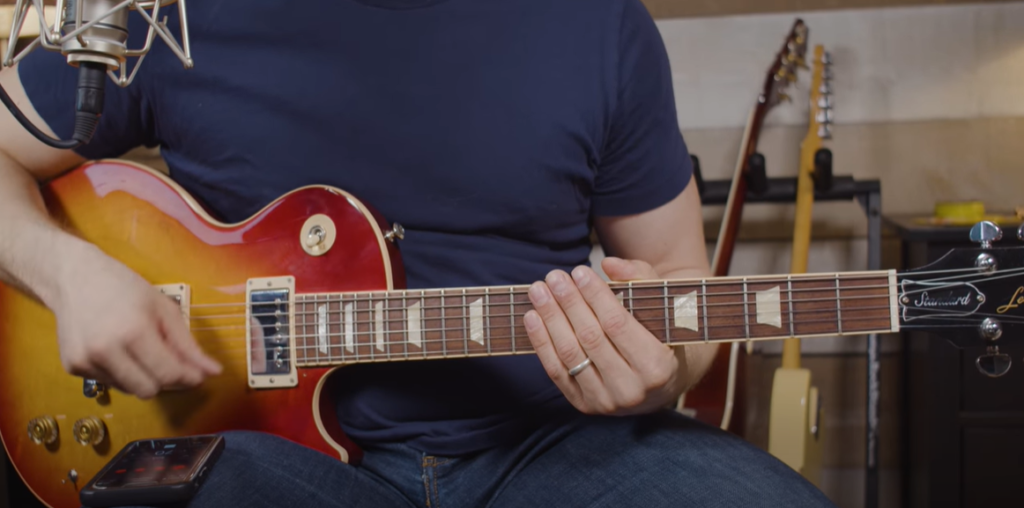
Chord Progressions
One of the most important skills for playing electric guitar is learning how to play chord progressions. This involves understanding and memorizing the various chords in a given key, as well as being able to transition smoothly between them.
A great way to practice this skill is by playing along with popular songs that use different chord progressions. This will help build muscle memory, improve your overall ear training, and increase your repertoire of song ideas.
Additionally, you can also practice transitioning from one specific chord to another using various scales and arpeggios. This requires more advanced theory knowledge than just playing along with songs but can be incredibly rewarding when mastered.
Finally, it’s always helpful to keep track of the chords you know in each key so you don’t get lost as you go. By doing this, you’ll be able to more easily explore different chord sequences and progressions.
Training Your Ear
Another important skill for playing electric guitar is training your ear. This involves being able to identify different notes, chords, and intervals by ear without having to rely on reading music or tab. There are a few exercises that you can use to help with this skill such as playing scales along with a drone note, harmonically singing one note while soloing on the guitar (without picking the same string), and playing notes blindfolded. As you practice these exercises, your ear will begin to develop more quickly and you’ll start to be able to distinguish musical ideas much easier. [2]
Speed Exercises
Speed exercises are crucial for learning how to play electric guitar at faster tempos. This means learning sequences of notes accurately and at a much faster rate than you’re used to. To help with this, use exercises like alternate picking (picking each note up and down while moving across strings), chromatic runs (moving through the notes of a scale in order), and legato licks (using hammer ons and pull offs to transition between notes). Additionally, make sure you practice slowly so you can nail the technique right away and don’t rush yourself as this can lead to sloppy playing.
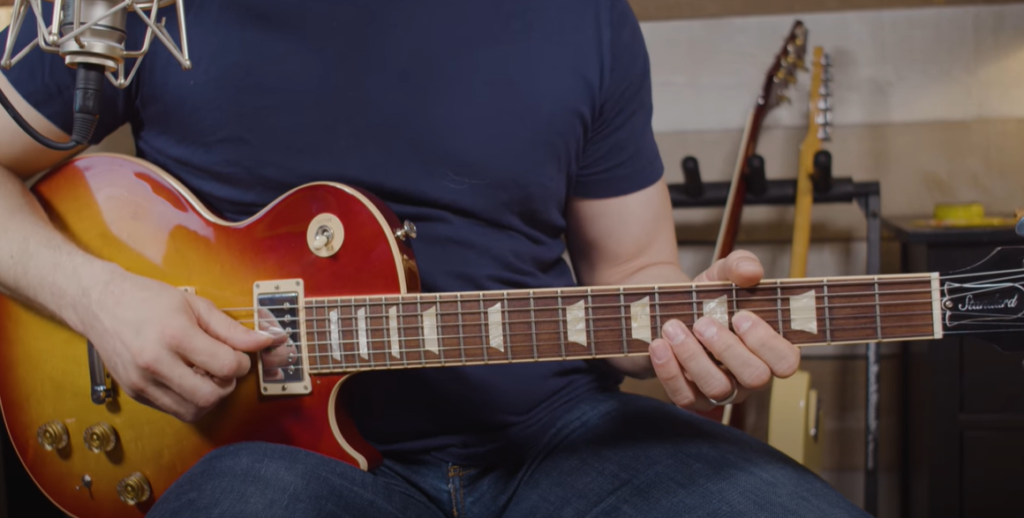
Picking and Strumming
It’s important to practice both picking and strumming when playing electric guitar. Picking exercises involve using different techniques such as alternate picking, sweep picking, and economy picking in order to accurately play notes across strings at a fast tempo. Strumming involves learning how to keep a steady rhythm while also being able to add accents or color tones by varying your pick stroke. Work on developing both of these skills separately and then work on combining them together in order to create new musical ideas. [3]
Tone
It’s the cornerstone of any electric guitar playing, and it must be developed over time. The best way to do this is to practice diligently, but also to use specific methods that will improve your tone quickly. One great technique is the use of delay effects. By using a delay pedal or setting on your amplifier you can get tones reminiscent of some classic guitar players like Eddie Van Halen or Jeff Beck. This sound adds depth by producing layers of echo that make each note sound bigger and fuller than if it was just played alone. Additionally, experimenting with different pickup combinations can help you find new tones as well. By combining single coils and humbuckers, for example, you can create sounds ranging from clean bluesy leads all the way up to thick metal riffs.
Practicing with a Metronome
While tone is important, it’s also crucial to build up speed and accuracy on the guitar. To do this, you should make use of a metronome when practicing. This device keeps time like a drummer would, allowing you to practice at specific speeds so that you can get better and faster over time. Start off slow and gradually increase the tempo as your skills improve. You can also combine this technique with alternate picking or legato playing to help develop even more control in your fingertips. [4]
Composition and Songwriting
An important part of electric guitar playing is composing and songwriting. This can be done in a variety of ways, but one great way to get started is by jamming with other musicians. Find a group that has the same musical tastes as you do and start coming up with ideas together. You may also want to explore different musical genres or styles on your own so that you can become more comfortable with improvisation and composition.
Soloing
Soloing is an important aspect of electric guitar playing that shouldn’t be overlooked. To become proficient at soloing, you should work on your scales and arpeggios. Spend time learning the fretboard in different positions and learn how to follow chord progressions. This can help give you the confidence to start improvising solos over songs or even create melodies from scratch. Additionally, studying popular solos by famous guitarists can also provide valuable insight into what goes into creating a good solo.
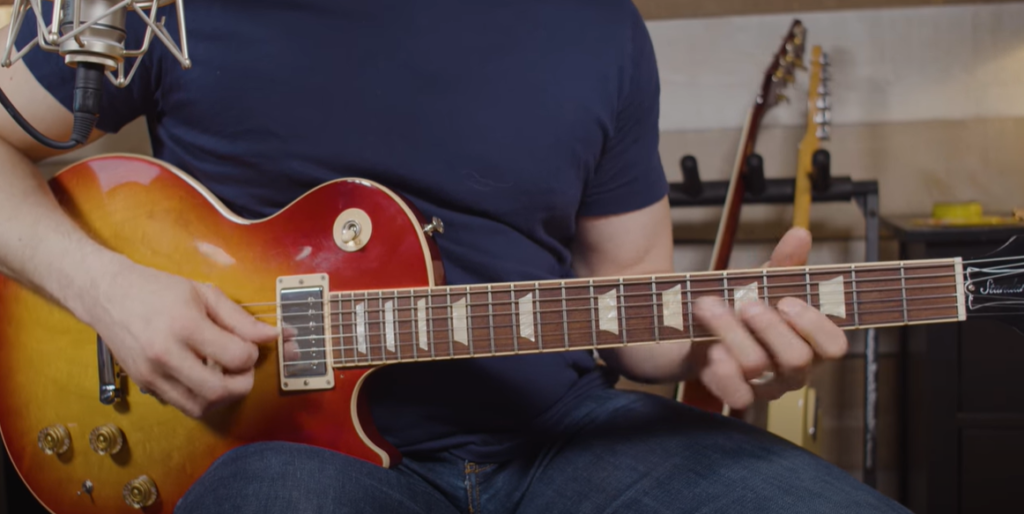
String Bending
String bending is an essential element of electric guitar playing. It’s a way to add expression and emotion to your playing, as well as create some unique sounds. To practice this technique, start off by learning how to bend each string individually. You should be able to move smoothly from one note to another without too much difficulty.
Double Stops
Double stops are when two strings are played at the same time. This technique can be used to create some interesting sounds, as well as provide an opportunity for wider intervals than single string playing would allow. Start by mastering open chords and then move on to trying out double stop licks in different positions of the neck.
Palm-muting Technique
Palm-muting is a technique used to dampen the strings, creating a more muffled sound. This can be useful in certain styles of music such as punk or metal where it adds an element of aggression to the guitar playing. To practice palm-muting, start by lightly resting your right hand’s side against the bridge while fretting the strings with your left hand. Try different amounts of pressure and listen for the different tones that come out. [5]
Legato Slide
Another great technique to practice with the electric guitar is Legato Slide. This technique can be used to add a unique sound and texture to your music, as well as give you an edge over other guitarists in the band. To practice this, start by playing a single note and then sliding up or down from that note to another of your choice. You can also experiment with multiple slides on different strings while still keeping in time with the music. This will help you generate interesting sounds and create intricate melodies without having to switch between chords. Practicing legato slide regularly will also increase your speed and accuracy when playing live shows or recordings.
Natural Harmonics
Natural Harmonics is a more advanced technique which adds an eerie and unique quality to your playing. It involves picking a note and then lightly touching the string with your finger at certain harmonic “nodes” along its length. This will result in a bell-like sound. To practice this, start by learning where these nodes are located on each string and get comfortable with finding them before attempting to play any music. With some practice you can use natural harmonics to add interesting elements to your guitar solos or rhythms.
Playing with Other Musicians
Finally, one of the best ways to practice your electric guitar is by playing with other musicians. This will help you develop your timing as well as push yourself out of any comfort zones that you may have. As a beginner, start by jamming with friends or other amateur players before trying to join an established band. Finding an experienced mentor who can offer guidance and give feedback on your playing is also highly recommended if possible. Playing in group settings will not only make practicing more enjoyable but it will also provide you with invaluable experience that cannot be replicated through solo practice.
By taking the time to practice these techniques regularly and actively engaging with other musicians, you can take your electric guitar playing to the next level! With some hard work and dedication, you will be able to master all the skills needed to become a great guitarist. So get out there and start practicing!
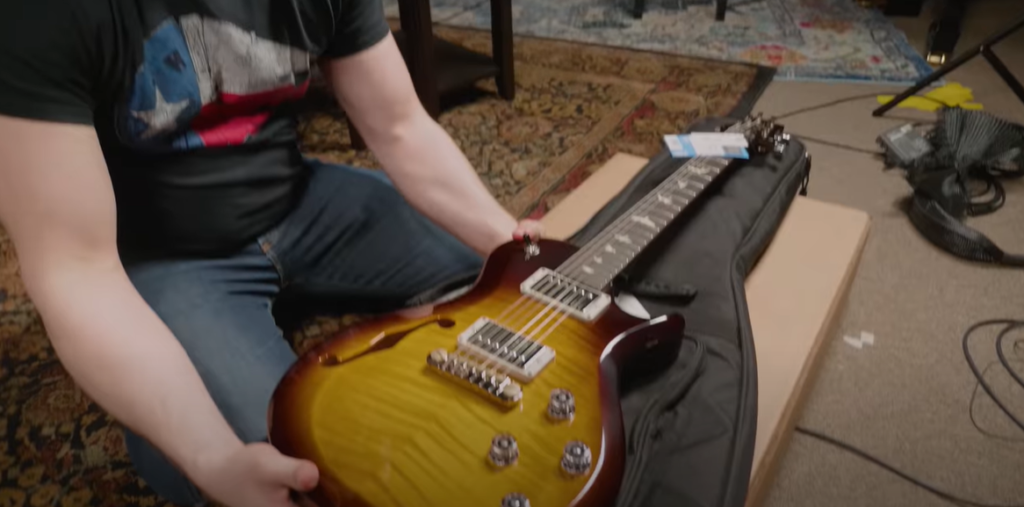
How to Tune an Electric Guitar?
Tuning an electric guitar is essential for producing a sound that is in-tune and enjoyable to the ear. To tune an electric guitar, you will need a digital or chromatic tuner and a few basic tools.
First, make sure your strings are securely attached to the bridge. If there is any slack or looseness in them, it could affect the tuning accuracy. Now turn on your tuner and place it near your instrument so that it can hear you play. Pluck each string one at a time, adjusting the tuning pegs until the needle points directly in the center of the display on your tuner. When all six strings are tuned correctly, your electric guitar should be ready to play!
Benefits and Disadvantages of Electric Guitars
Electric guitars have been around for decades and are beloved by musicians of all genres, from rock to country. While electric guitars are more expensive than their acoustic counterparts, they offer several distinct advantages. The biggest advantage is that electric guitars allow players to shape the tone of their instrument with pickups and effects, creating an array of unique sounds. Electric guitars also deliver greater volume, so they’re ideal for larger venues or louder bands. Additionally, electric guitarists can use a variety of techniques such as guitar distortion, sustain and feedback to create interesting musical textures that wouldn’t be possible on an acoustic guitar.
Finally, electric guitars require regular maintenance and upkeep in order to keep them in good condition. All these factors should be taken into consideration when buying or playing an electric guitar.
Overall, electric guitars offer a unique sound that can’t be replicated by acoustic instruments. With proper practice and care, they can provide years of musical enjoyment for both amateur and professional players alike. As with any instrument, the best way to get the most out of an electric guitar is to practice regularly and take advantage of all its capabilities! [6]
Electric Guitar vs Acoustic Guitar
When it comes to practicing electric guitar, there are some key differences from playing acoustic guitar. Firstly, the sound when playing an electric guitar is much louder and more powerful than that of an acoustic instrument, meaning you need different techniques for both types of instruments.
Electric guitars often require a lower action and heavier strings in order to produce the desired sound. Additionally, electric guitars typically require amplifiers and effects pedals in order to achieve the desired tones. This means you may need to invest in additional equipment such as amplifiers and pedals if you want to practice electric guitar effectively.
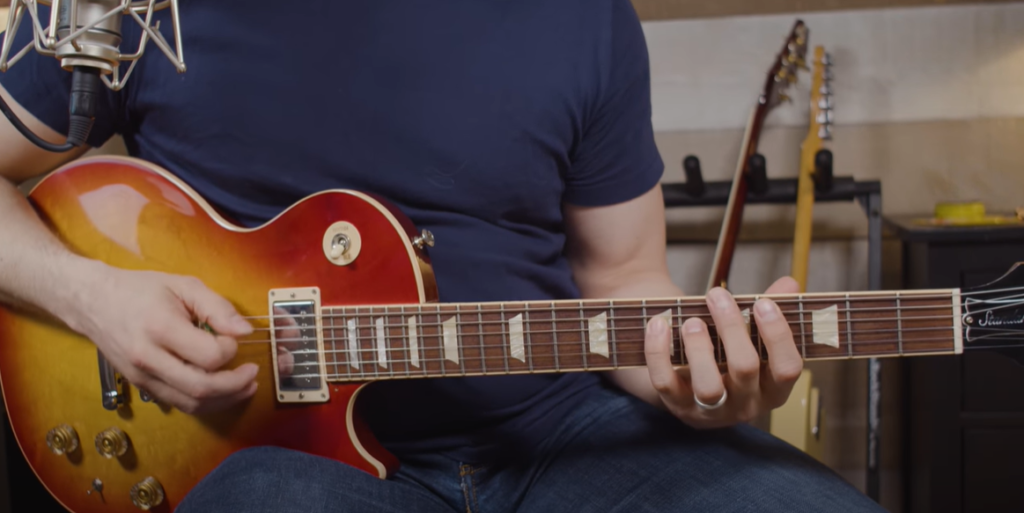
Another difference between electric and acoustic guitars is the type of music they are used for. Electric guitars are generally used for rock, pop, metal and other genres that require a heavier sound. Acoustic guitars, on the other hand, are more commonly associated with folk, blues and country music. This means you may need to adjust your playing style depending on the type of music you want to learn.
When practicing electric guitar, it’s important to remember to warm up properly before you start playing. Doing so will help prevent any potential injuries from occurring as well as ensuring that you can play for longer periods of time without fatigue or injury. Additionally, it will help ensure that your hands are relaxed and comfortable when playing, allowing for better accuracy and speed when performing certain techniques such as string bending or tapping.
Finally, it’s good practice to use a metronome or other timing device when practicing guitar. This will help you to stay in time and develop a good sense of rhythm, which is essential for any musician. As well as this, it can also help with developing speed and accuracy when playing complex passages. Over time, you’ll find that your skills will improve significantly with the use of a metronome when practicing electric guitar.
Is It Too Late to Learn Electric Guitar?
No matter your age, it’s never too late to learn electric guitar. Whether you’re a novice or an experienced musician, taking the time to practice and hone your skills can help you reach new heights with your instrument. Here are some tips for practicing electric guitar:
- Set Goals: Determine what type of musician you want to be and set goals that will help you get there. For example, if you want to become proficient in jazz playing, start by learning basic chords and scales and then work up from there.
- Get Comfortable with Your Instrument: Before diving into more advanced techniques, make sure that you are comfortable handling the basics such as tuning your instrument properly and changing strings when necessary. This will ensure that you have the best foundation to build upon.
- Learn the Fundamentals: It’s important to learn the fundamentals such as scales, chords, and strumming patterns before you move on to more advanced techniques. Spend time learning how to play different chord progressions and practice these until they become second nature.
- Develop Your Technique: Once you have a solid grasp of the basics, start to focus on developing your own technique by experimenting with different picking and fretting techniques. This will help give your playing its own unique sound that is all your own.
- Practice Regularly: Make sure that you set aside some time each day for practice in order to continue progressing with your skills. Even if it’s just 10 minutes, having a regular practice routine will help you stay on track and reach your goals faster.
No matter where you are in your journey as an electric guitar player, there is always room to grow and progress with the instrument. With dedication and commitment, there is no limit to what you can accomplish! [7]
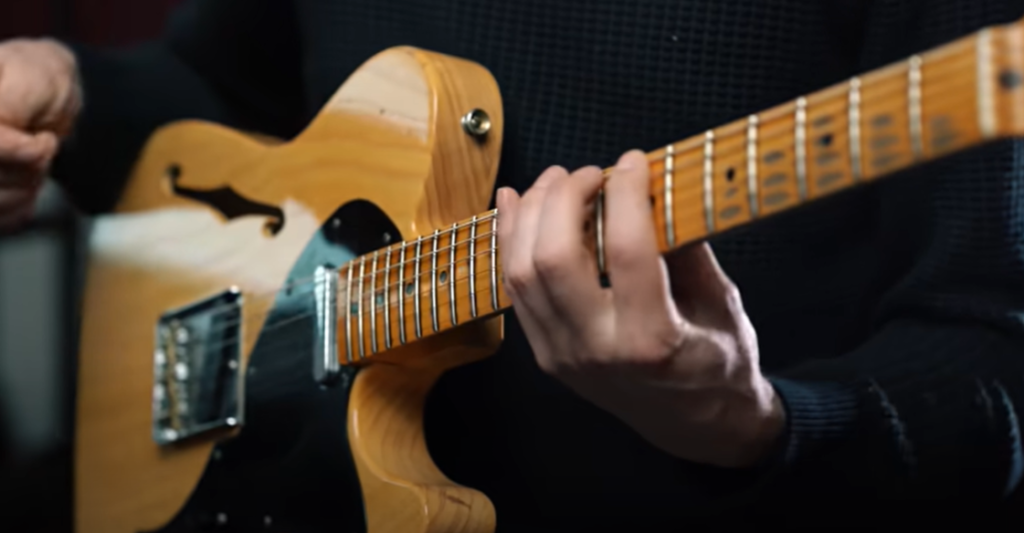
Electrify Your Practice: Advanced Techniques for Electric Guitar Mastery
Take your electric guitar skills to the next level with these advanced practice techniques. Dive into this comprehensive comparison table, featuring aspects such as technique focus, skill level, recommended genres, equipment requirements, and additional tips to elevate your proficiency on the electric guitar.
| Technique | Technique Focus | Skill Level | Recommended Genres | Equipment Requirements | Additional Tips |
|---|---|---|---|---|---|
| Sweep Picking | Arpeggios, Scales | Advanced | Shred, Metal | High-Gain Amp, Distortion Pedal | Start Slow, Focus on Clean Articulation |
| Tapping | Fretboard Tapping | Intermediate-Advanced | Rock, Metal | Overdrive Pedal, Amplifier | Practice Synchronization with Both Hands |
| Whammy Bar Techniques | Pitch Bends, Dives | Intermediate-Advanced | Rock, Blues | Floyd Rose Tremolo System | Experiment with Vibrato and Subtle Expressions |
| String Skipping | Alternate Picking, Wide Intervals | Intermediate | Country, Fusion | Clean Amp Settings, Compressor Pedal | Focus on Precision and Accuracy |
| Hybrid Picking | Fingerpicking, Pick Usage | Intermediate | Country, Jazz | Clean Amp Settings, Reverb | Isolate Finger and Pick Movements for Control |
Explanation:
- Sweep Picking: Advanced technique focusing on arpeggios and scales, ideal for shred and metal genres, requires a high-gain amp and distortion pedal. Start slow and prioritize clean articulation.
- Tapping: Intermediate-advanced technique involving fretboard tapping, suited for rock and metal, requires an overdrive pedal and amplifier. Practice synchronization with both hands.
- Whammy Bar Techniques: Intermediate-advanced techniques like pitch bends and dives, suitable for rock and blues, requires a guitar with a Floyd Rose tremolo system. Experiment with vibrato and subtle expressions.
- String Skipping: Intermediate technique involving alternate picking and wide intervals, ideal for country and fusion, requires clean amp settings and a compressor pedal. Focus on precision and accuracy.
- Hybrid Picking: Intermediate technique combining fingerpicking and pick usage, recommended for country and jazz, requires clean amp settings and reverb. Isolate finger and pick movements for control.
Choose a technique from this table and electrify your practice routine, mastering advanced skills on the electric guitar.
FAQ
How do you practice electric guitar effectively?
The key to developing your electric guitar playing is to have a practice plan that includes a variety of goals, exercises and creative strategies. Start with the basics and build up from there. Warm up your body with stretches and scales, then move onto some simple techniques such as palm muting, string skipping and picking exercises. Incorporate different rhythmic patterns into your practice sessions and challenge yourself with new ideas every day. Finally, don’t forget to set aside time for improvisation – it’s an important part of expanding your musical repertoire!
How do you improve chord transitions?
Chord transitions are all about timing and memorization. Begin by familiarizing yourself with the basic shapes of each chord before trying to transition between them. Then, practice slowly and steadily until you are comfortable moving through the transitions without hesitation. Metronomes can be a helpful tool to ensure that your timing is accurate. Finally, make sure to keep your hands close to the fretboard as this will help with accuracy in transitioning from chord to chord.
How do you master difficult guitar licks?
Learning difficult guitar licks requires dedication and patience! Break down each lick into manageable components and focus on mastering each one individually before trying to play it all at once. Make sure to use a metronome when practicing – this will help you fine-tune your accuracy and speed. Be patient with yourself and don’t get discouraged if things take longer than expected – eventually, you’ll be able to master that lick!
How do you develop speed on guitar?
Developing speed on guitar requires patience and consistency. Start by learning simple exercises and scale patterns, then focus on mastering them slowly but surely. Once you’ve built up some basic skills, gradually increase the speed at which you are playing. Make sure to use a metronome when practicing – this will help ensure that your timing is accurate. Finally, don’t forget to take breaks in between practice sessions so as not to overwork yourself.
What should I practice on electric guitar first?
One of the best ways to start learning electric guitar is by developing your basic technique. This includes everything from proper hand positioning, smooth fretting and picking techniques, as well as exercises such as scales, chords and arpeggios. All these techniques are essential to becoming a skilled guitarist and should be practiced regularly. Next you should look into strengthening your musicality. Taking lessons or studying music theory can help you understand what makes up a song, such as its form and structure, and how different elements fit together to create a cohesive piece of music. You can also learn about different genres of music so that you’ll have an understanding of different styles of playing. Finally, it’s important to practice improvisation. This involves learning how to play “off the cuff” and develop your own unique style of playing. Improvisation is an essential skill for any guitarist, as it helps you create and explore new ideas on the guitar.
How many hours a day should I practice electric guitar?
The amount of time you should practice electric guitar each day depends on your experience level and goals. For a beginner, the recommended daily practice time is usually between 1–2 hours. As you become more experienced and comfortable with playing, this can be increased to 3–4 hours or more per day if desired. Remember that quality is always better than quantity when it comes to practicing, so try not to rush through your practice sessions but instead focus on perfecting the techniques you’re working on at the moment. Spending too much time playing without making any real progress can lead to burnout and frustration, which ultimately slows down your learning process.
Can I learn electric guitar in 2 months?
Learning electric guitar in two months is possible, but it really depends on your current skill level and how much time you’re able to dedicate to practice. For beginners, we recommend starting with the basics and focusing on building a strong technical foundation. This means practicing things like correct hand positioning, fretting techniques and basic music theory concepts such as scales and chords. Once you have these fundamentals down, you can start incorporating more complex musical elements such as improvisation and learning different genres of music.
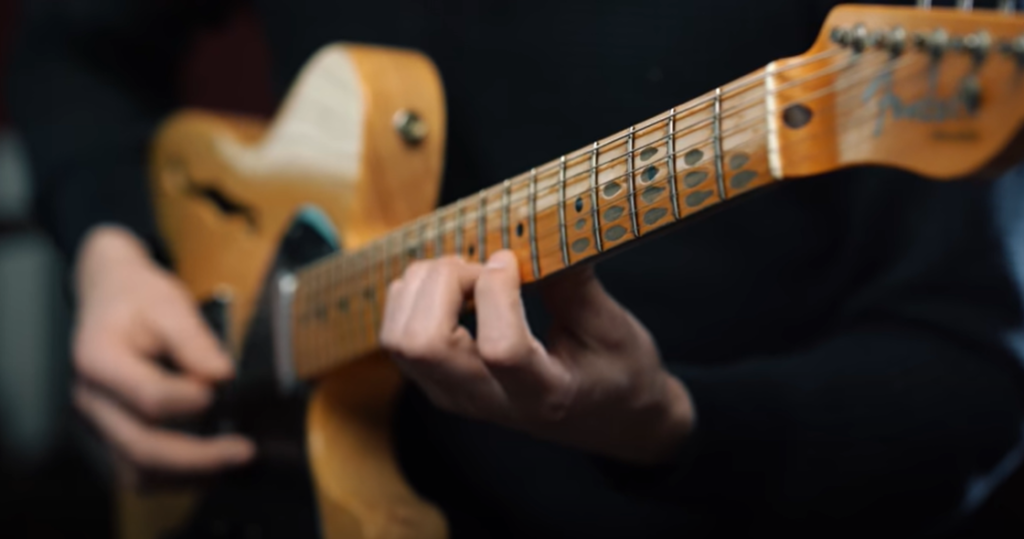
Is it too late to learn electric guitar at 20?
Absolutely not! It’s never too late to start learning electric guitar, no matter what your age. You may find it a bit more challenging as you get older, but with regular practice and dedication, you can still become a great guitarist. Just remember to take things slow and focus on developing good technique before attempting more complex pieces. With the right approach, there’s no reason why you can’t become an amazing guitarist at any age.
What are effective techniques for enhancing your bending and vibrato skills on the electric guitar?
To improve bending and vibrato skills on the electric guitar, start by practicing controlled and precise bends. Work on bending notes to the correct pitch and maintaining control over the bend’s speed. For vibrato, experiment with varying speeds and widths while keeping the note in tune. Utilize these techniques in scales and solos to develop a nuanced and expressive playing style.
Can you provide tips for mastering sweep picking technique on the electric guitar?
Mastering sweep picking involves precise coordination between the picking hand and fretting hand. Start with slow, clean, and controlled sweeps across arpeggios, paying attention to the synchronization of your hands. Gradually increase the speed as you gain proficiency. Practice with a metronome to maintain timing accuracy, and focus on minimizing excess noise for a smooth and articulate sweep picking technique.
What techniques can I use to improve my tapping skills on the electric guitar?
To enhance tapping skills, begin with simple tapping exercises using one finger. Gradually incorporate more fingers and experiment with tapping on different strings and frets. Practice tapping in conjunction with other techniques like hammer-ons and pull-offs to create dynamic and fluid phrases. Start with slow tempos and gradually increase speed as you build accuracy and coordination in your tapping technique.
How can I develop my alternate picking technique for increased speed and precision?
To improve alternate picking, focus on playing scales, patterns, and exercises with a strict alternate picking motion. Use a metronome to gradually increase the tempo, ensuring that each pick stroke is precise and controlled. Practice string-crossing exercises to refine your picking hand’s coordination and build speed gradually. Consistent and focused practice will help you develop both speed and precision in your alternate picking technique.
What are effective strategies for incorporating legato playing into my electric guitar practice routine?
To incorporate legato playing, emphasize hammer-ons and pull-offs in your practice routine. Work on playing scales and melodic lines using minimal picking and letting your fretting hand generate the sound. Practice legato exercises with various finger combinations and across different positions on the fretboard. Gradually increase the complexity of the phrases to build finger strength, dexterity, and smooth legato playing on the electric guitar.
Useful Video: Guitar Exercises For Speed And Accuracy
Conclusion
Practicing electric guitar can be a very rewarding and enjoyable experience. With the right techniques in place, such as regularly switching up songs and styles, breaking tasks down into smaller chunks, focusing on accuracy over speed, using a metronome or backing track, and taking regular breaks to listen to other music and relax, you will see your skills improve over time. When it comes to mastering an instrument like the electric guitar, there is no substitute for dedication and patience. Keep these tips in mind as you work towards becoming a better musician!
References:
- https://play-guitars.com/practicing-electric-guitar/
- https://www.uberchord.com/blog/beginners-guide-to-guitar-practice/
- https://play-guitars.com/practicing-electric-guitar/
- https://www.guitarplayer.com/lessons/60-exercises-to-improve-your-playingright-now
- https://www.learnguitarmalta.com/7-electric-guitar-techniques-that-will-make-you-stand-out/
- https://guitargearfinder.com/lessons/5-things-to-do-every-time-you-practice-guitar/
- https://blog.truefire.com/guitar-lessons/9-free-electric-guitar-techniques/





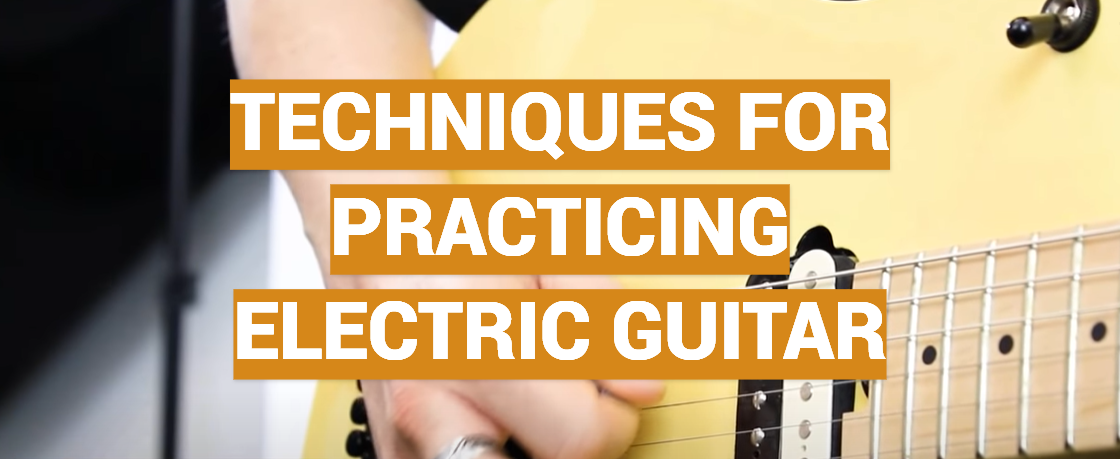




Leave a Reply